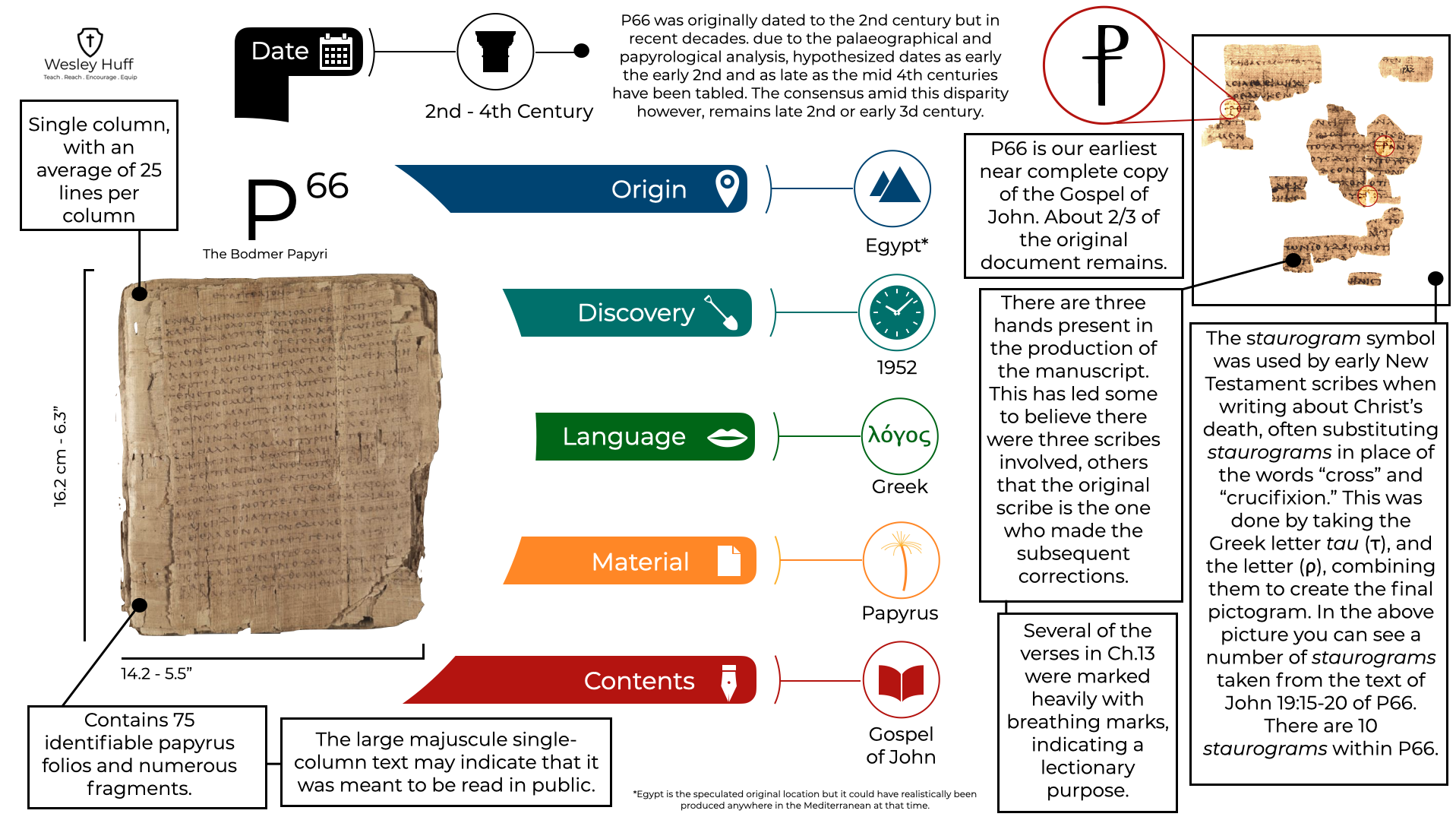Some of the most ancient and most notable New Testament manuscripts
P52 (aka John Rylands 457) is one of the most notable New Testament manuscript fragments. Potentially the earliest extant piece of documentary evidence for the biblical New Testament, this papyrus fragment was discovered by C.H. Roberts in the basement of the John Rylands Library in 1934.
P66 (aka P.Bodmer II) is one of the earliest and most well preserved copies of the Gospel of John. Containing 2/3 of the entire Gospel, its discovery and publication surprised scholars due to the first 26 leaves being almost entirely intact. Ancient codices (what we would think of as a book) tend to lose most of the top and bottom sheets due to those being the most vulnerably exposed. Dated as early as the second century and as late as the fourth century, it nonetheless is in incredible shape considering its age. P66 is currently housed at the Bibliotheca Bodmeriana, in Cologny, just outside Geneva.
P75 (aka Papyrus Bodmer XIV XV) is a 2nd or 3rd century manuscript text of Luke and John. Owned originally by Martin Bodmer and later donated to the Vatican where it is housed to this day. The text of P75 has a striking similarity to the 4th century Codex Vaticanus, which when discovered and evaluated, opened up a conversation both the scholarly perception of the text in its early form and as well as the function and purpose of Codex Vaticanus as a major codex.
P46 (aka P. Chester Beatty II), was discovered somewhere in the Fayum of Egypt, near what is beleived to be the ruins of a monastery near Atfih. It is one of our earliest collection manuscripts, that is, instead of being a single independent document it is a grouping of the Pauline epistles. Very early on the four Gospels and the Pauline epistles were being grouped together in collection codices, pointing to their significance in the early Christian community as prominent and important writings. One significance to this is that the P46 collection includes the book of Hebrews. While the majority of modern scholarship (correctly in my opinion) believes that Hebrews was not in fact written by Paul, it does appear that the collector of P46 did.
Whatever it is, the way you tell your story online can make all the difference.
Codex Sinaiticus (aka א) is one of the most important Bibles in the world. The project started in the Middle of the fourth century and it marks our earliest surviving complete copy of the Christian New Testament in one volume. Having been in regular use for what is estimated to be around 600 years, Sinaiticus was eventually rediscovered at the Monastery of St. Catherine, at the base of Mount Sinai, in the nineteenth century by German biblical scholar, Constantine Tischendorf.
Codex Vaticanus ( aka B ) is one of the most important Bible’s in the world. The document has been housed in the Vatican Library since the 16th century and was largely made known to the world of Western biblical scholarship due to Erasmus’ correspondence with Bombasius in Rome in order to consult this important 4th century manuscript. Erasmus did so in order to see whether 1 John 5:7-11 was included in the most ancient readings of 1 John. The reading was not and so Erasmus (rightly) left it out of his 1st and 2nd editions of his Greek New Testaments. The 3rd edition did include 1 John 5:7-11 but this was largely due to pressure from the church authority at the time. Erasmus’ 3rd edition played a key role as an early edition of the primary texts used by the KJV translators and is one of the main reasons why 1 John 5:7-11 is in the King James today but not in modern translations.







